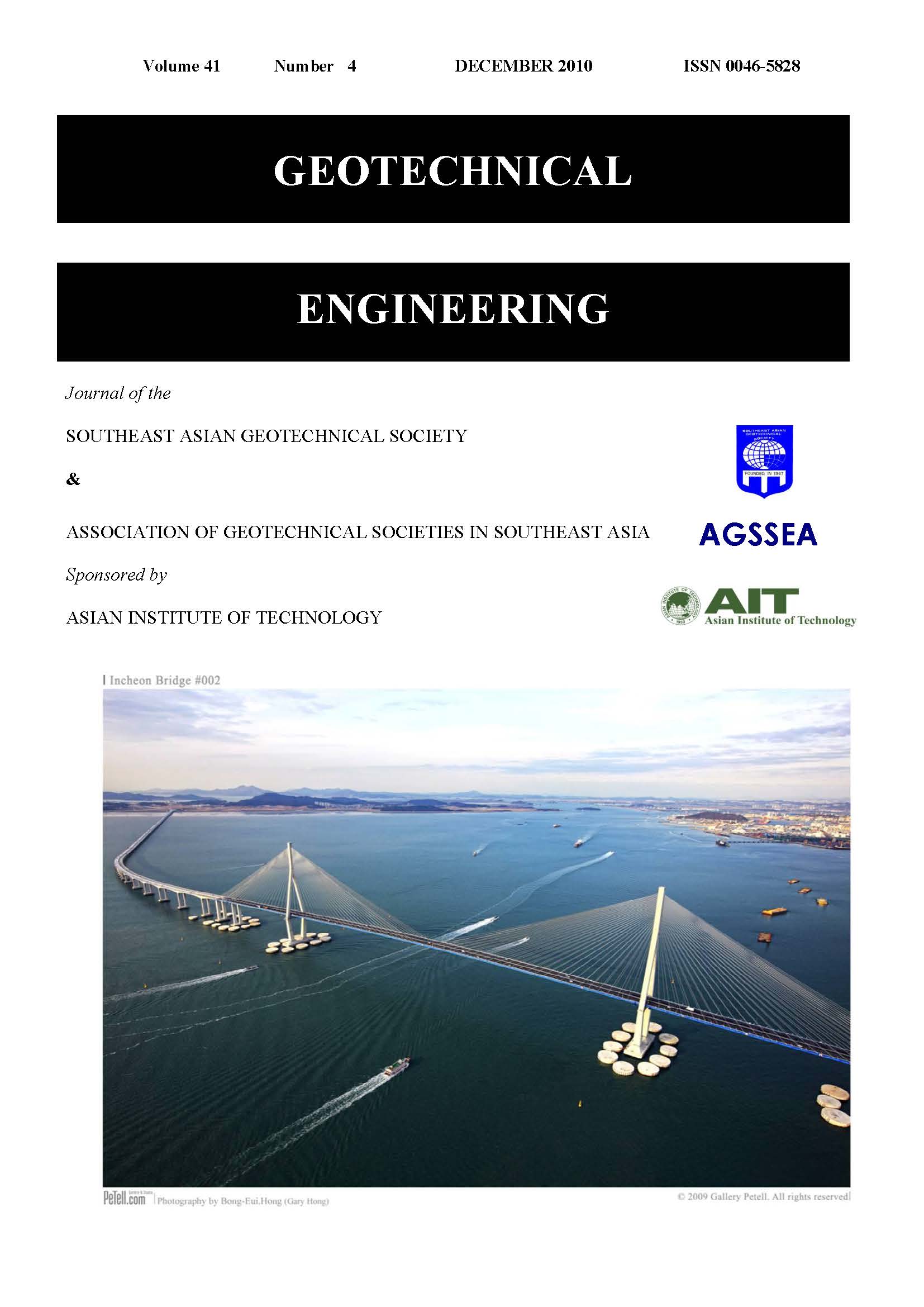Foundation Design of the Incheon Bridge
Main Article Content
Abstract
The Incheon Bridge, the longest bridge of Korea which was opened to the traffic in 2009, is an integration of several special featured bridges and the major part of the bridge consists of cable-stayed spans to cross the Yellow Sea. All the foundations consist of drilled shafts, large diameter bored pile foundations which were penetrated into the bedrock under the seabed. A single pile-bent type foundation system was selected as well as the pile-cap type foundations. New design scheme according to the LRFD (load & resistance factor design) specification was implemented for the project. The estimation of bearing capacity and settlement of rock socketted drilled shafts was carried out based on the understanding of the site condition, the ground properties and pile load test results. The results of the load tests were thoroughly analyzed by a number of experts to determine the resistance factor, giving a unique opportunity to improve the current LRFD concept in Korea. Geotextile tubes to block seawater were made to construct the foundation at the foreshore site whose tidal difference between ebb and flow was so large. Rip-raps which were designed by physical modeling and analysis are spread around the pile to prevent the scouring of the foundation. Circular dolphin structures made of the flat sheet piled wall and in-filled aggregates surround the piers near the navigation channel to protect the bridge against the collision with aberrant vessels. The structural design of the dolphin as a ship impact protection system was performed with numerical analyses of which constitutional model was verified by the physical model experiment using the geo-centrifugal testing equipment.
Article Details

This work is licensed under a Creative Commons Attribution-NonCommercial-NoDerivatives 4.0 International License.
Copyright © 2019 Association of Geotechnical Societies in Southeast Asia (AGSSEA) - Southeast Asian Geotechnical Society (SEAGS).


